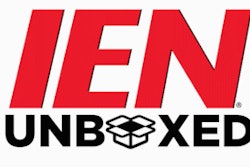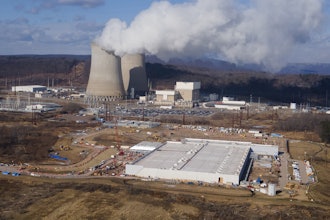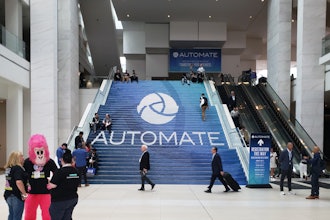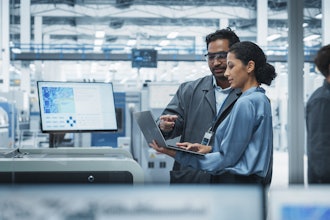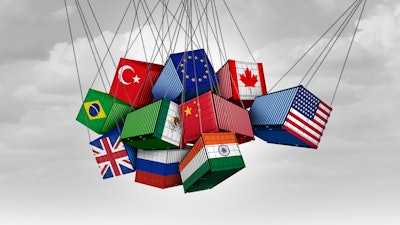
U.S. tariff policies are shifting so fast that American manufacturers are struggling to keep up — and the costs can be staggering. A shipment budgeted at $60,000 can balloon to more than $90,000 to $100,000 by the time it arrives at port.
With dozens of tariffs announced, enacted, threatened and canceled since the start of the year, companies are being forced to adjust pricing and procurement strategies in real time, often with little warning.
While manufacturers remain broadly optimistic about the economy and the potential boost from more protective tariff positioning, the volatility of the U.S. tariff policy is a separate matter; 64% of leaders expect tariffs to benefit their company, yet 87% worry about operational disruptions caused by shifting policies.
This volatility hits manufacturers where it hurts: sudden price hikes and supply chain disruptions can quickly erode profits.
It's why the U.S.'s tariff policy has been so difficult for manufacturers to deal with. In recent months, dozens of tariffs have been announced, enacted, threatened and canceled, creating less stability and predictability for the American manufacturers caught in the middle.
Trying to get ahead of tariff policies has manufacturers stockpiling materials, creating a tenuous cash position for companies who now have the cost of warehouse space adding to their financial headaches.
The suddenness of these changes can leave manufacturers scrambling to secure cash on impossibly short timelines. Tariffs can spike without warning — jumping from 10% to 34%, then surging past 100% — and payment is due the moment shipments clear customs.
For small and mid-sized manufacturers, that kind of financial whiplash can mean halting production, delaying payroll or even losing critical contracts.
Companies that have been relying on older data models will struggle to absorb the costs of unexpected tariffs, which is why America's top companies have already figured out how to leverage AI in their data.
AI technologies have matured to the point where they can process real-time structured and unstructured data to offer predictive insights and dynamic decision-making support — particularly in the area of procurement strategy and sourcing.
What it takes to be successful as a manufacturer right now is having the data and insights that AI is best at providing. Things like:
- Predictive cost modeling: allowing companies to look at a holistic picture of their cost while layering in different scenarios based on how tariff policies may change.
- Active supply chain insights: giving companies real-time insights into the state of their supply chain, including ongoing changes and uncertainties
- Alternative sourcing and scenario planning: offering companies a full-picture view of where else they can source their materials from and doing analysis on what these changes may cost or save
These are specific and straightforward tasks that AI is incredibly well-equipped to manage, and manufacturers can optimize their tariff strategies by being able to ask these sorts of questions of their data.
Can the supply chain be diversified or split with materials sourced from multiple countries? Should a shipment be held in a foreign trade zone until a specific point in time? Are shipments coming in the most efficient way possible?
Overbuying materials and loading up warehouses can only help for so long; eventually, materials run out and companies will need to deal with the reality of tariffs on their supply chain.
Manufacturers that want to escape the short-term panic that's associated with these tariff announcements can do so by making sure they have long-term data systems in place.
AI won't solve every problem manufacturers face, but the right tools can address their most pressing issues and force them to confront the state of their data infrastructure, which is overwhelmingly behind the curve. 70% of manufacturers report still entering data by hand.
But that doesn't mean AI isn't the right solution for these manufacturers — it just means they have to start small and focus on what it is they do know. Companies need to have up-to-date and accurate landed cost calculations and complete visibility into their inventory.
Then manufacturers can start asking questions: how can they hold less in their warehouses, and how can they ship sooner? How do they benchmark against top-performing companies?
When combined with practical tariff optimization strategies, manufacturers may find they can save money. Converse famously saved 34% on its tariff duties with a simple redesign of the sole of its Chuck Taylors that allowed them to recategorize their product. I've seen companies save thousands by merely changing the way they load their freight trucks.
There are hundreds of tools out there — including Centers for Excellence, which can help specifically when it comes to adhering to regulations.
Volatile tariff policies are going to continue to create cash flow problems for manufacturers unless they begin instituting long-term strategies to deal with the fallout. AI should be a keystone element of manufacturers' response, but one that will require improved data infrastructure to optimize.
Todd Hass is a Partner in RubinBrown’s Consulting and Manufacturing & Distribution Services Groups.







